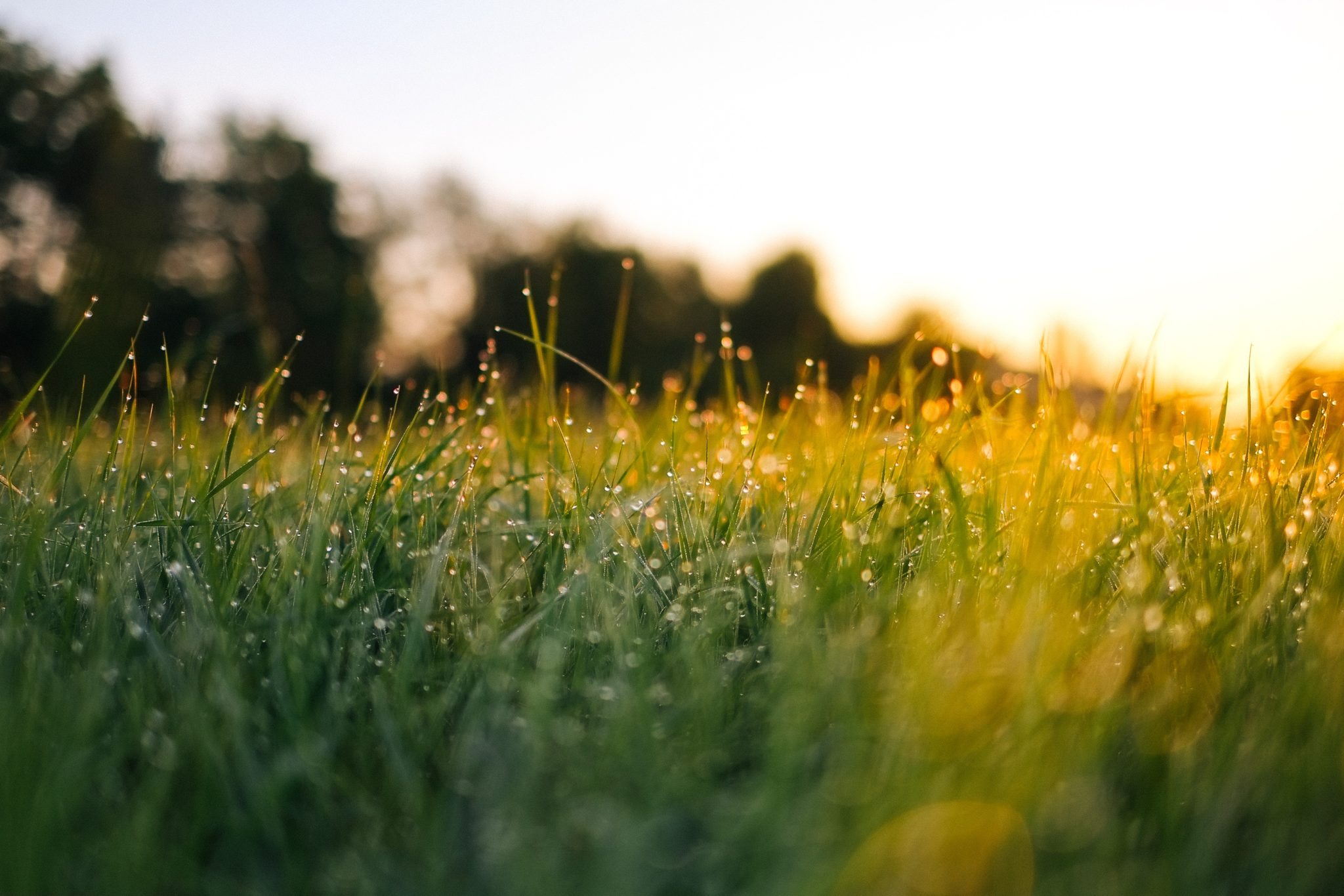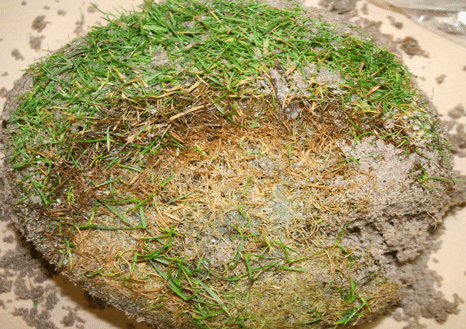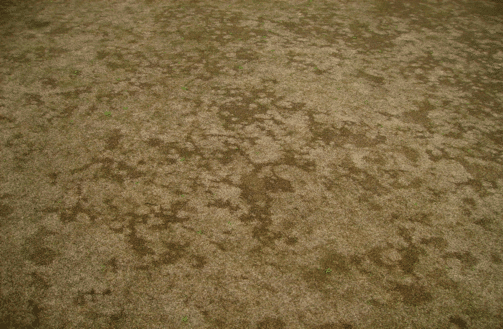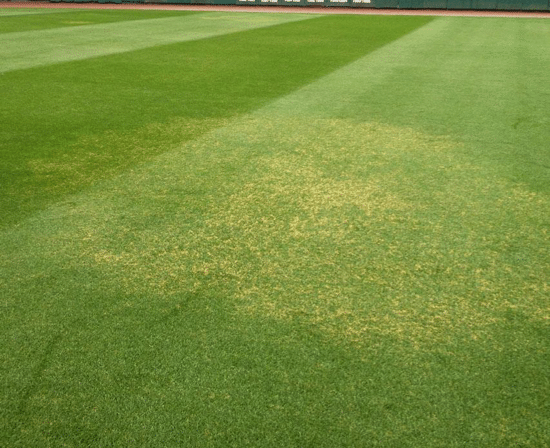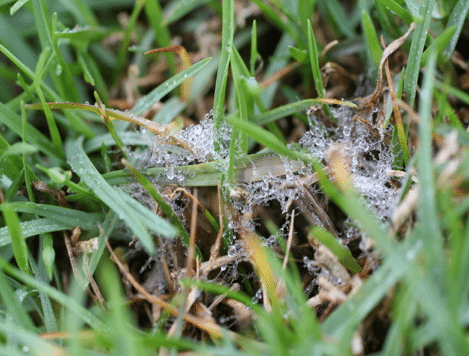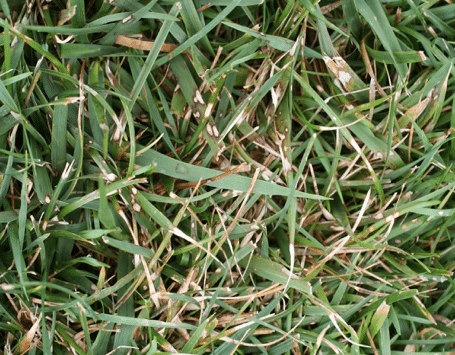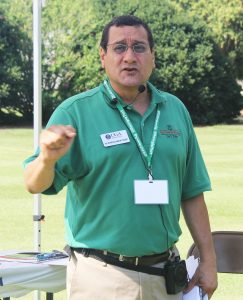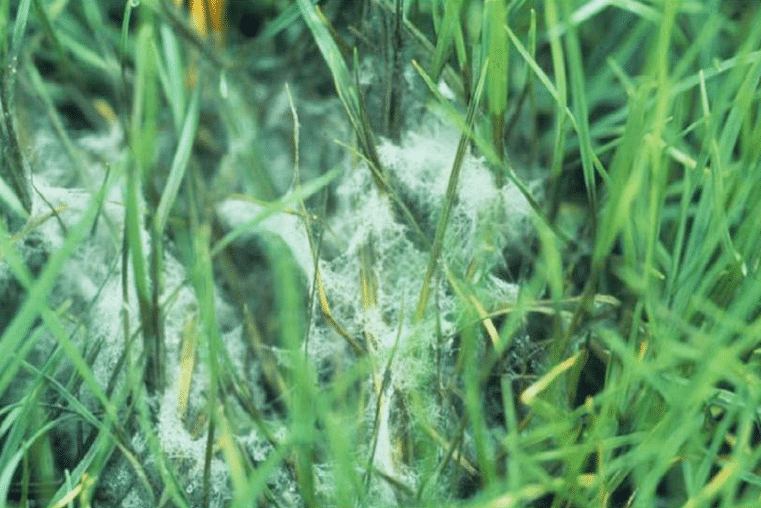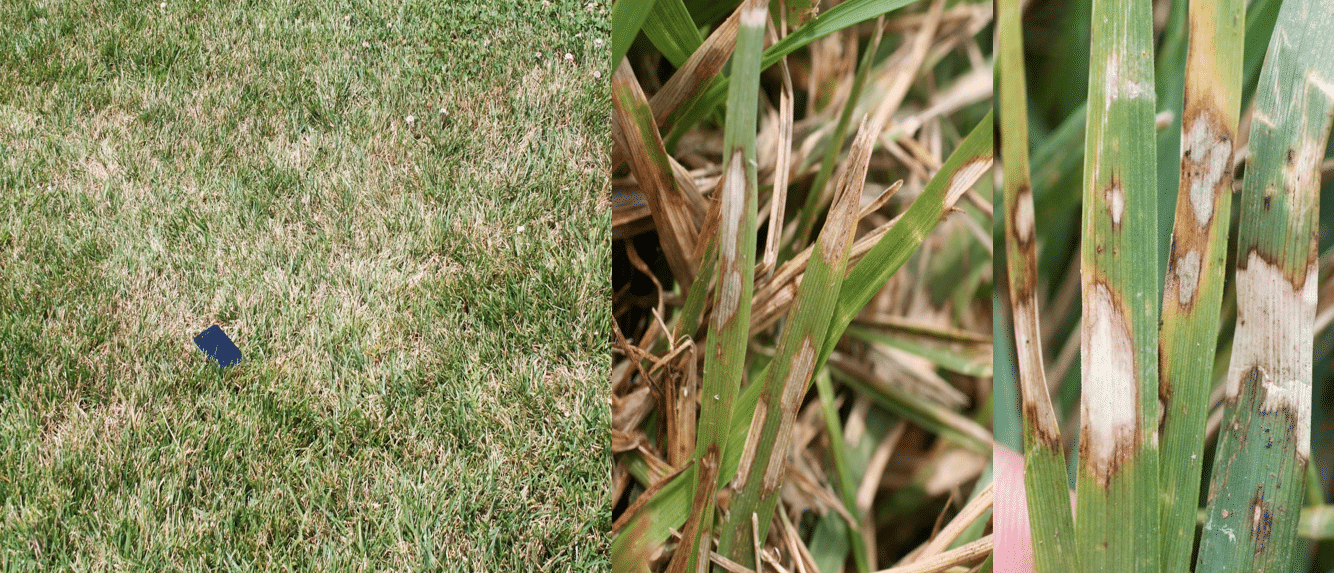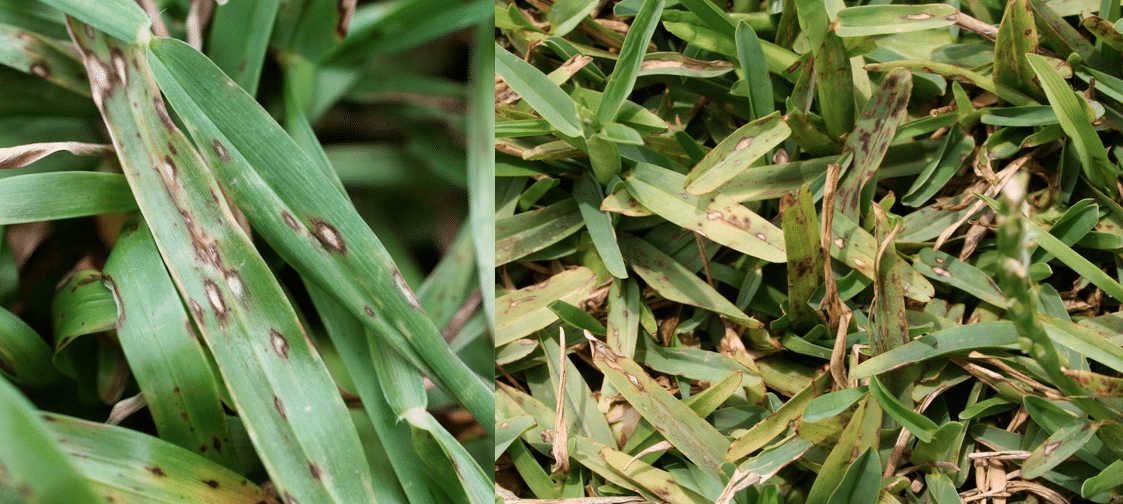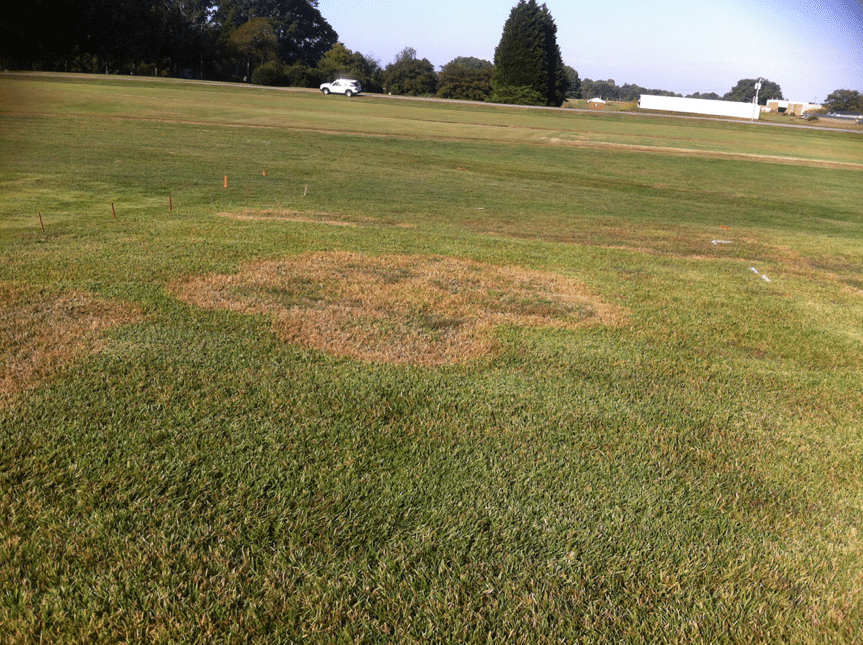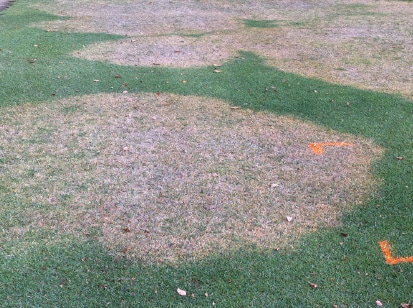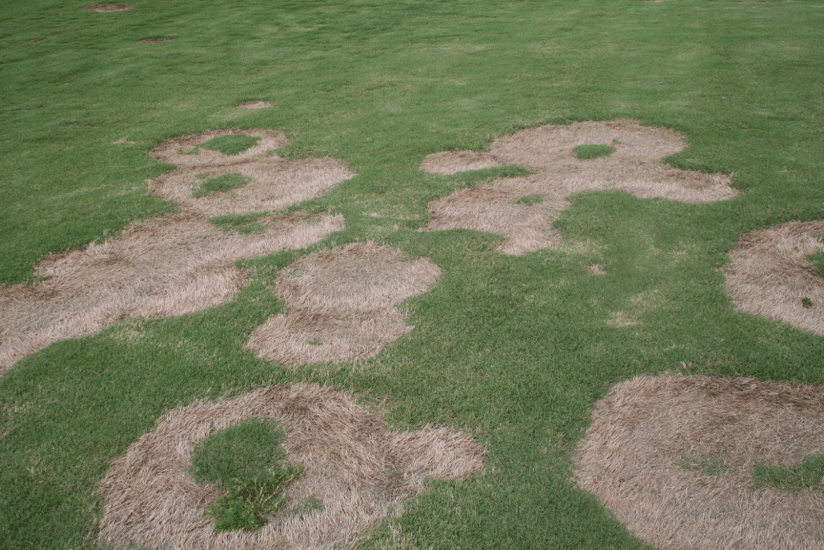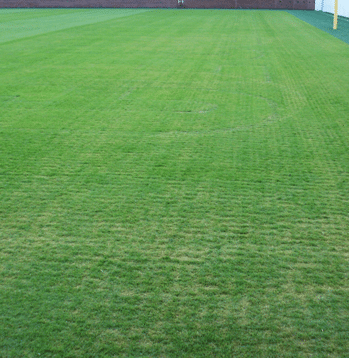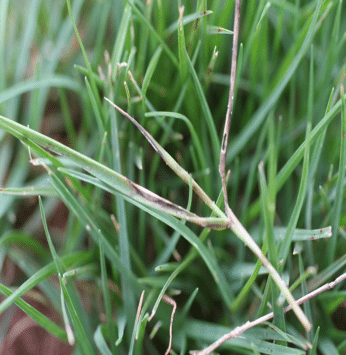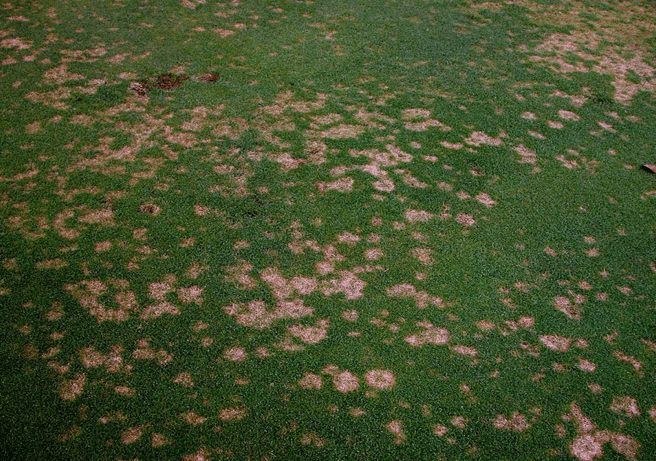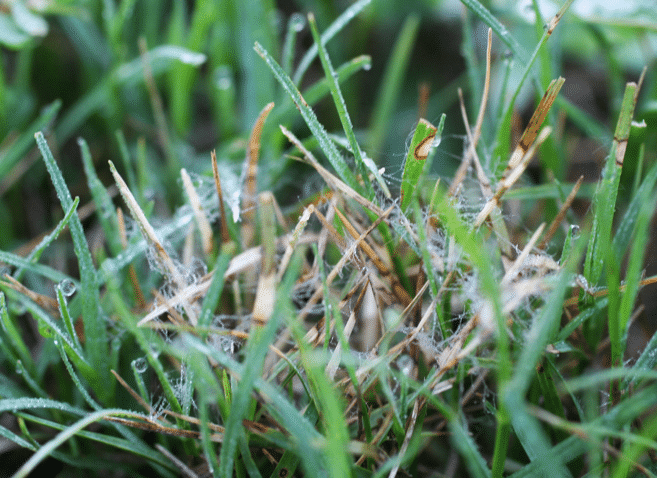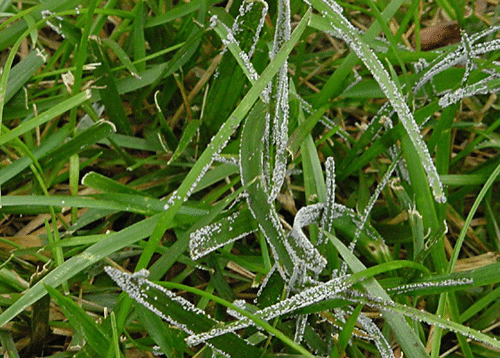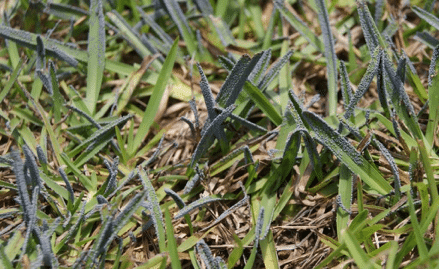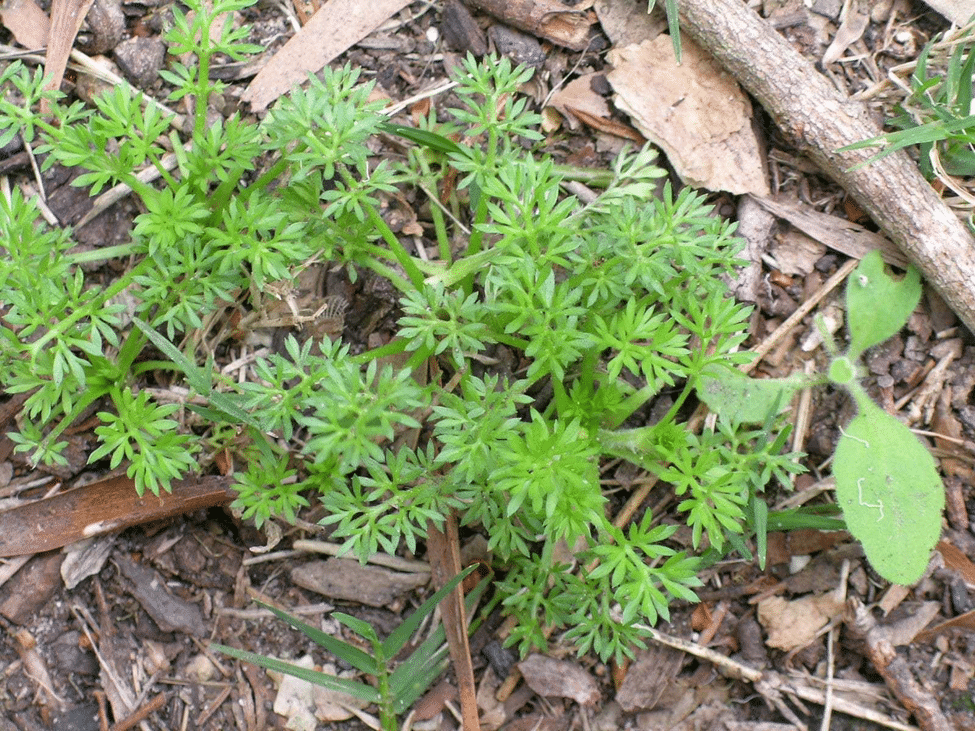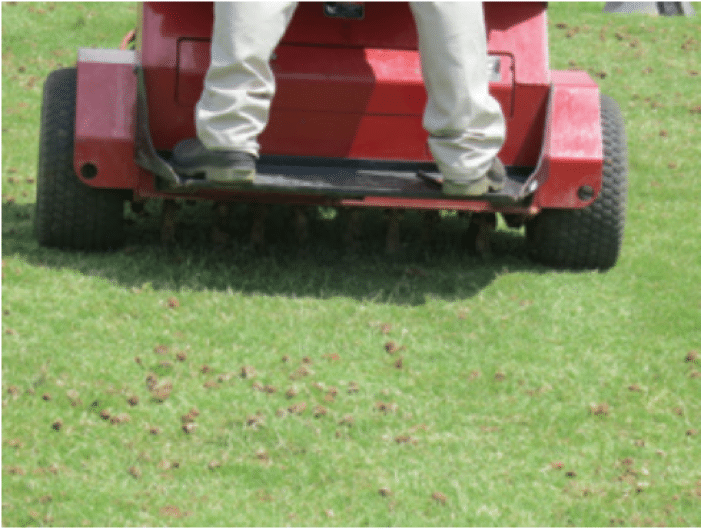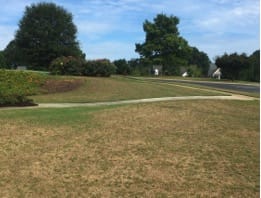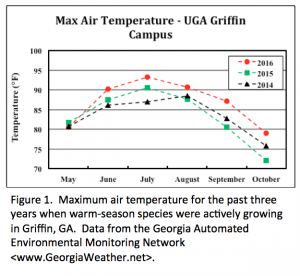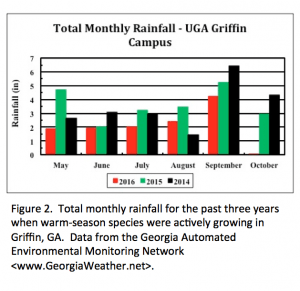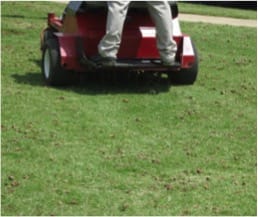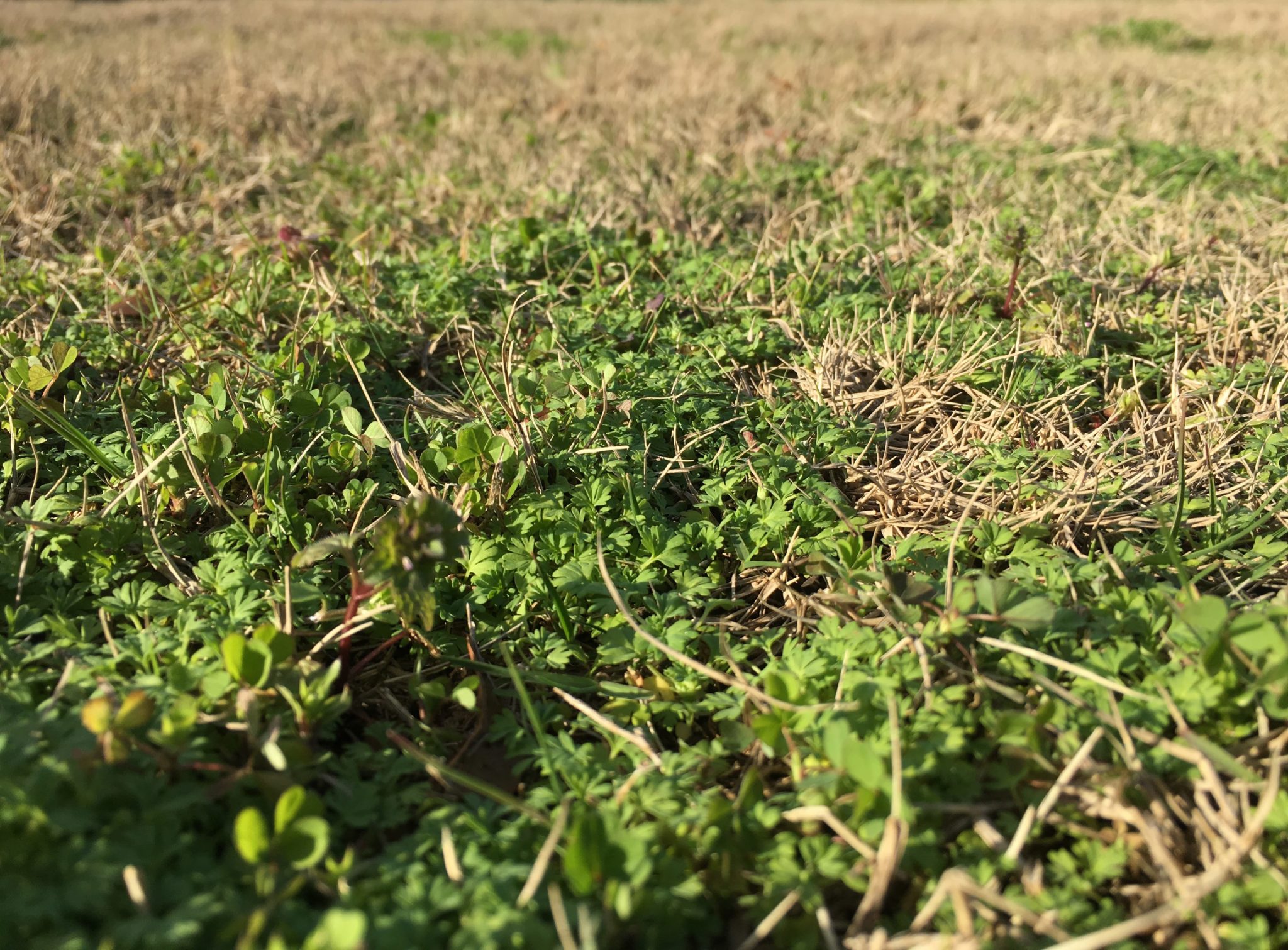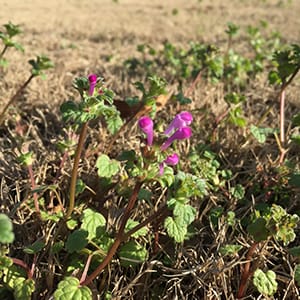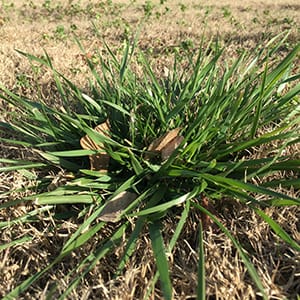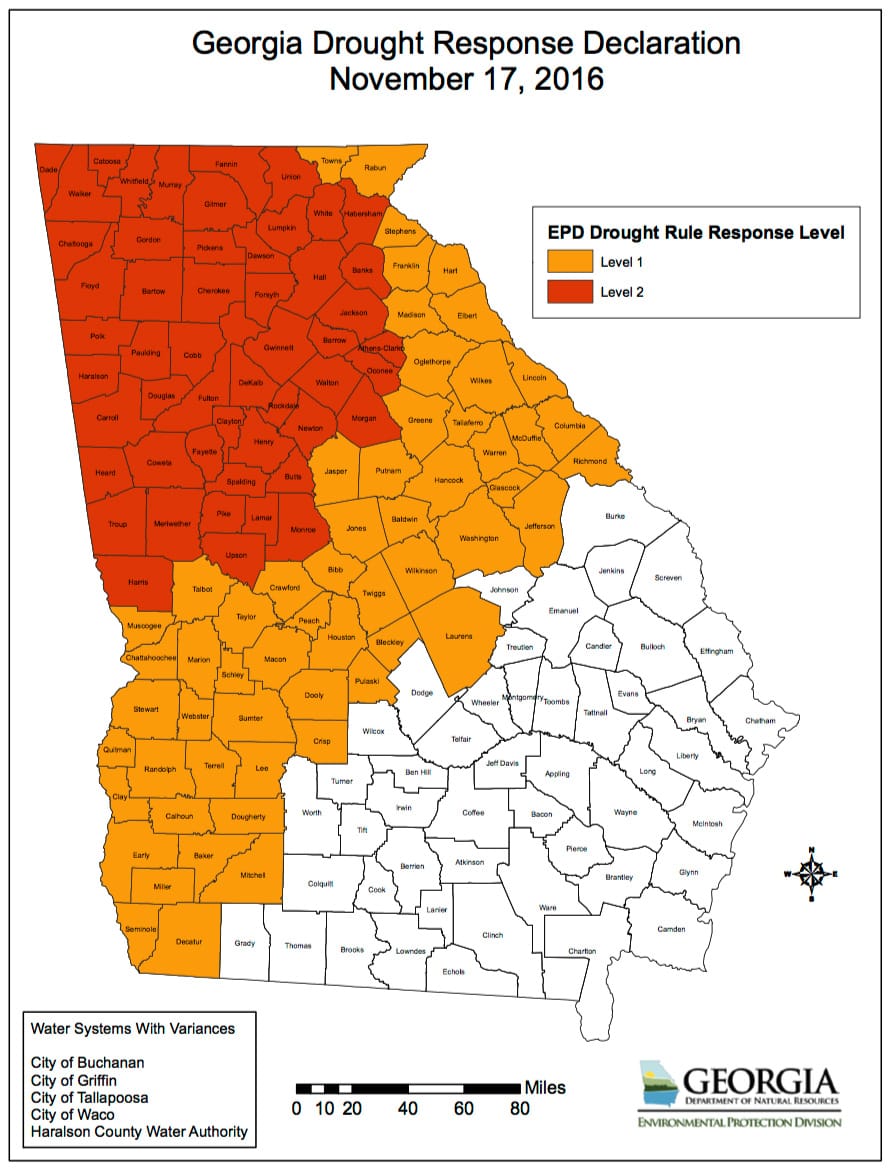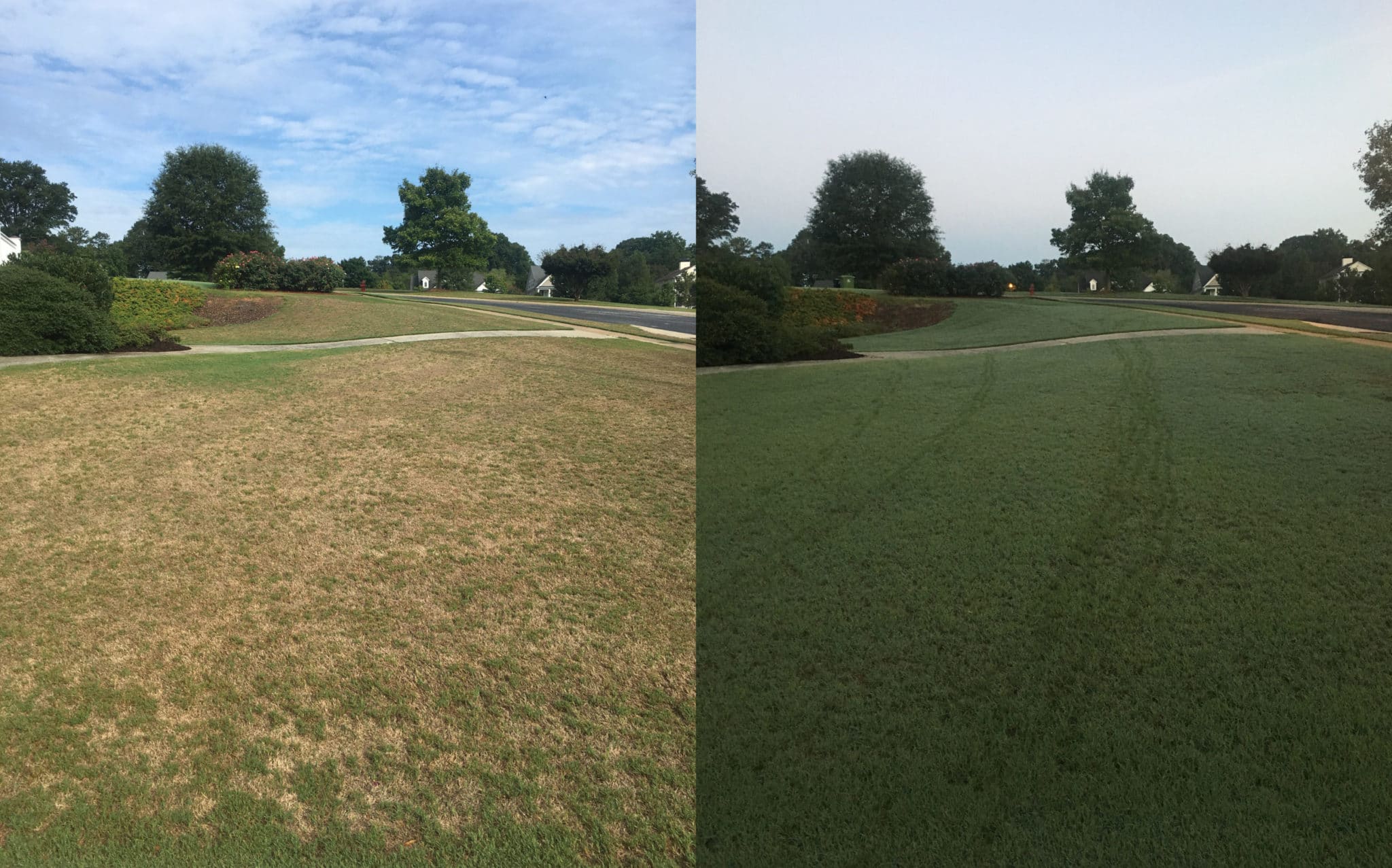
Insufficient production and storage of photosynthates during the fall transition into dormancy can translate to issues during spring green-up. Drought stressed turfgrass in August 2016 (Left) was able to recover prior to dormancy following appreciable rainfall (Right). However, we are seeing drought-stressed turfgrass in September of 2019 and the dormancy transition is quickly approaching. Photo by Clint Waltz, UGA.
Tips for managing drought stressed turfgrass as dormancy approaches
by Clint Waltz
During periods of hot and dry weather, certain modifications to your lawn maintenance practices will help to carry your turfgrass through periods of inadequate rainfall and reduce losses. The height of the warm-season turfgrass growing season spans from May to October. Given average conditions (regular rainfall and moderate temperatures), bermudagrass, zoysiagrass, St. Augustinegrass, centipedegrass, and other warm-season species respond quickly to cultural and maintenance practices such as mowing, fertilizing, aerating, topdressing, and weed management. However, the summer of 2019 has delivered hot and dry weather with sporadic rainfall. With fall approaching, now is the time to adjust your turfgrass management program to promote a smooth transition into dormancy and green-up next spring.
From mid- through late-summer rainfall across Georgia has been variable with some areas receiving timely rain and other areas being droughty. Moisture stress in turfgrasses can be recognized in the early stages by a dull bluish-gray cast. Additionally, take note of footprints and tire tracks in the turf that do not seem to rebound. If you are in an area that has lacked rain, consider applying some irrigation to get the grass growing.
Dr. Clint Waltz, UGA Extension Turfgrass Specialist, suggests these tips for managing turfgrass as it transitions into dormancy:
- Raise the cutting height within the recommended mowing range
- Do not apply nitrogen containing fertilizers
- Modify herbicide programs during high temperatures and moisture stress
- Water deeply & infrequently
- Grasscycle
- Use water conserving and drought tolerant turfgrasses
Raise the Cutting Height
Turfgrass stress can be reduced by using a sharp mower blade and raising the cutting height by 1/2″ or to the tallest allowable height of the recommended mowing range during drought. A clean cut also reduces moisture loss through wounds and minimizes entry points for disease. Taller shoots promote deeper roots and a dense canopy can help to reduce ground surface temperatures and conserve moisture. Grasscycling (mulching clippings versus bagging) can also help to conserve moisture.
Avoid Nitrogen Applications
As grasses move into dormancy they need to “harden-off”. Nitrogen fertilization encourages new shoot growth which directs plant sugars, and other metabolites, away from storage organs (e.g. rhizomes, stolons, and crown). These storage organs and sugars provide the energy for the grass to green-up next spring. By allowing the plant to harden-off and accumulate sugars in the storage structures, the grass is better able to survive winter stresses and recover next year.
Modify Herbicide Programs During High Temperatures and Drought
Many herbicides act upon plant growth processes and can be less effective during periods of drought when weeds are not actively growing. In addition, certain herbicides may cause damage to drought-stressed turf or non-target landscape plants due to volatilization and drift during high temperatures. Review your pesticide labels for specific information regarding temperature requirements, watering requirements, and proper application.
Water Deeply and Infrequently
The optimum watering schedule can be roughly determined by observing the number of days that pass between signs of moisture stress. Apply sufficient water to saturate the root zone to a depth of 6-8 inches. Clay soils and sloped areas may require staggered watering intervals to allow time for water infiltration between cycles and prevent runoff. Irrigating in early morning conserves water by reducing evaporation and drift. A good practice is to align watering schedules with drought management rules so that in the event of a declared drought, the appropriate watering program is already in place. The 2010 Water Stewardship Act permits lawn watering between the hours of 4:00pm and 10:00am.
Use Water Conserving and Drought Tolerant Turfgrass Cultivars
The University of Georgia Turfgrass breeding programs continue to make excellent strides in developing improved cultivars with low water use and high drought tolerance. For new installations or where turfgrass replacement is needed, look for improved cultivars such as TifTuf bermudagrass. Visit www.GeorgiaTurf.com for more information on selecting turfgrasses.


